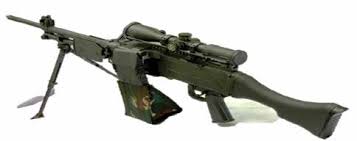The United States (US) has granted approval for F-16 fighter jets to be sent to Ukraine from Denmark and the Netherlands.
As reported by Reuters, these jets are intended to bolster Ukraine’s defense against Russian forces, and the deployment will take place following the completion of pilot training, according to a US official’s statement.
Ukraine has been proactively pursuing US-made F-16 fighter jets to bolster its capacity in responding to Russia’s aerial supremacy.
And, US now has officially guaranteed Denmark and the Netherlands that it will accelerate the process of approving requisite third-party transfer requests for F-16s destined for Ukraine.
This will streamline the delivery of F-16s to Ukraine once pilot training is completed.
Reuters further noted that Denmark and the Netherlands, the two countries leading the training coalition, had recently asked for those assurances.
About F-16 Fighter Jets
The F-16 Fighting Falcon is a compact, multi-role fighter aircraft. It is highly maneuverable and has proven itself in air-to-air combat and air-to-surface attack.
It provides a relatively low-cost, high-performance weapon system for the United States and allied nations.
In an air combat role, the F-16’s maneuverability and combat radius (distance it can fly to enter air combat, stay, fight and return) exceed that of all potential threat fighter aircraft.
Further, it can locate targets in all weather conditions and detect low flying aircraft in radar ground clutter.
In an air-to-surface role, the F-16 can fly more than 500 miles (860 kilometers), deliver its weapons with superior accuracy, defend itself against enemy aircraft, and return to its starting point.
An all-weather capability allows it to accurately deliver ordnance during non-visual bombing conditions.
General characteristics
Primary function: multirole fighter
Contractor: Lockheed Martin Corp.
Power plant: F-16C/D: one Pratt and Whitney F100-PW-200/220/229 or General Electric F110-GE-100/129
Thrust: F-16C/D, 27,000 pounds
Wingspan: 32 feet, 8 inches (9.8 meters)
Length: 49 feet, 5 inches (14.8 meters)
Height: 16 feet (4.8 meters)
Weight: 19,700 pounds without fuel (8,936 kilograms)
Maximum takeoff weight: 37,500 pounds (16,875 kilograms)
Fuel capacity: 7,000 pounds internal (3,175 kilograms); typical capacity, 12,000 pounds with two external tanks (5443 kilograms)
Payload: two 2,000-pound bombs, two AIM-9, two AIM-120 and two 2400-pound external fuel tanks
Speed: 1,500 mph (Mach 2 at altitude)
Range: more than 2,002 miles ferry range (1,740 nautical miles)
Ceiling: above 50,000 feet (15 kilometers)
Armament: one M-61A1 20mm multibarrel cannon with 500 rounds; external stations can carry up to six air-to-air missiles, conventional air-to-air and air-to-surface munitions and electronic countermeasure pods
Crew: F-16C, one; F-16D, one or two
Unit cost: F-16A/B , $14.6 million (fiscal 98 constant dollars); F-16C/D,$18.8 million (fiscal 98 constant dollars)
Initial operating capability: F-16A, January 1979; F-16C/D Block 25-32, 1981; F-16C/D Block 40-42, 1989; and F-16C/D Block 50-52, 1994
Inventory: total force, F-16C/D, 1017
Source: https://www.af.mil/About-Us/Fact-Sheets/Display/Article/104505/f-16-fighting-falcon/





